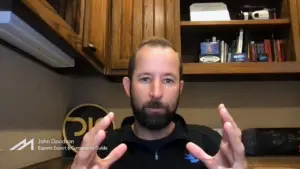The Fall of FTX Arena Highlights Big Risk in High-Profile Branding Partnerships
As the saying goes, the bigger you are the harder you fall. Well, FTX has fallen pretty hard over the past few weeks. A company that once was valued at over $30b is now nearing bankruptcy as deals continue to fall through for the crypto giant. The most recent of these implosions is the collapse of FTX Arena, as the NBA’s Miami Heat and Miami-Dade County both terminated their partnership with FTX after its bankruptcy announcement.
As deals like FTX Arena crumble, experts are wondering what the risk/reward ratio really looks like for companies, sports stadiums, and sports teams of varying sizes to enter into negotiations with similar tech-giants in the future.
George Perry, Business Professor at George Mason University, explains why some smaller sports organizations who bet big on crypto brand partnerships may look elsewhere for the next big team-up, while others with more capital insulation are able to better roll with the punches.
George’s Thoughts
“While some rights holders might pause before entering into a deal with a cryptocurrency company, in the end, it’ll come down to risk tolerance. We’ve seen this before during the dot-com bubble burst. You had companies like CMGi and PSINet who had stadium naming rights deals went bankrupt, and yet we’re still seeing stadiums with technology companies attached to ’em.
So depending on the amount of money, if you are a small league like the Women’s Soccer League who recently got burned by a cryptocurrency deal, you may not enter into a deal with a less established company in the crypto industry. However, if you’re the NFL or Major League Baseball and you have extra cash, and if this large deal happens to fall through, you can still operate your business and continue to be profitable, and you’ll probably enter into a deal and take the chance.
Now you might restructure the deal if you’re smart, get more of that money up front so you don’t end up having to chase that money in bankruptcy court.”
Article written by Michael Boyer.







